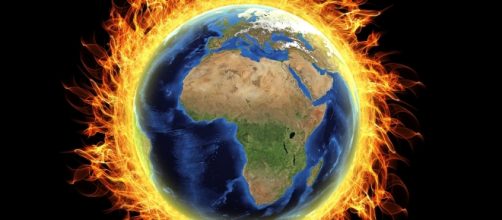A former top NOAA scientist has come forward and revealed how climate change data was manipulated ahead of the Paris climate talks. Not only was the data manipulated to show there was never a global warming pause, but a much-ballyhooed breakthrough paper was used to dispel any ideas a global warming pause existed and get it published before the important Paris climate talks.
John J. Bates, a former NOAA scientist and now an agency Whistleblower, said NOAA breached its own scientific integrity rules when it published a sensationalized report that showed the global warming pause wasn’t real in order to influence the outcome of the Paris climate talks.
Bates first told his story to the Daily Mail’s David Rose and said the “pause-buster report” was aimed at then-President Obama and other world leaders at the 2015 United Nations climate conference.
Matt Ridley: Politics And Science Are A Toxic Combinationhttps://t.co/1JN4eFtWpe pic.twitter.com/swdowsDope
— GWPF (@thegwpfcom) February 6, 2017
Timing is everything
The pause-buster report claimed the hiatus in global warming since 1998, as acknowledged by the U.N. in 2013, never existed and that temperatures had been rising faster than measured. The pause-buster paper was covered by major media outlets and hailed by politicians to advance the global warming narrative and usher in the new policy.
Bates, who provided indisputable proof the Thomas Karl paper was based on deceptive, unsupported data, never went through NOAA’s exacting internal evaluation procedures before it was published in “Science Magazine.” When he strongly opposed the use of faulty data in the new paper, NOAA supervisors overrode his objections in what Bates called a “blatant attempt to intensify the impact” of the pause-buster paper.
Whistleblower: NOAA Scientists Manipulated Temperature Data To Make Global Warming Seem Worse https://t.co/pPRDj8thlN via @dailycaller
— Bruno Amaral (@BrunoAm05317727) February 6, 2017
‘Science bomb?’
The pause-buster paper notes that the rate of global warming from 1950 to 1999 was.113°C per decade, and the rate from 2000 to 2014 was actually higher, at 0.116°C per decade. That made the IPCC's acknowledged pause “no longer valid.” Newspapers around the world proclaimed the pause an illusion and a “science bomb” for skeptics.
Karl obtained the results by manipulating the sea surface temperature data known as ERSSTv4 by cooling older temperature datasets to make current ocean warming more prominent.
Bates pointed out they took reliable data from buoys and corrected them to match less reliable readings from ships. That doubled the amount of warming during that period from 0.086°C to 0.039°C per decade.
Whistleblower scientist reveals world leaders were duped by manipulated climate data when NOAA broke own its rules https://t.co/gEDpTIJk5w
— David Rose (@DavidRoseUK) February 4, 2017
Procedural missteps
The land temperature records fared no better inside Karl’s computer. The pause-buster paper increased the amount of warming during the 2000 to 2014 time-period from 0.15°C to 0.164°C per decade. Satellite data shows no statistical warming until a strong, naturally occurring El Nino elevated temperatures worldwide in 2015-2016.
After the paper was published, Bates learned Karl and his colleagues failed to follow formal procedures required to approve and archive their data and they used an experimental software program riddled with bugs to combine the two datasets. The software was so unstable that it still hasn’t been approved for use at NOAA. And the data had not been saved when the paper was published, preventing replication and verification by other scientists.
University of Toronto Wants to “Save” Climate Data from Trump https://t.co/YUInpzbqlg pic.twitter.com/Pp5Afo6Fnj
— Watts Up With That (@wattsupwiththat) December 14, 2016
Bates finds it ironic that people are worried the Trump administration will somehow start deleting climate data, given those tasked with maintaining NOAA's data’s integrity under the Obama administration failed.
Worse, the agency mounted a cover-up when the House Science Committee launched an inquiry into the pause-buster claims. NOAA refused to comply with subpoenas and falsely claimed that no one at the agency raised concerns about Karl’s paper. Science Magazine refused to comment.

